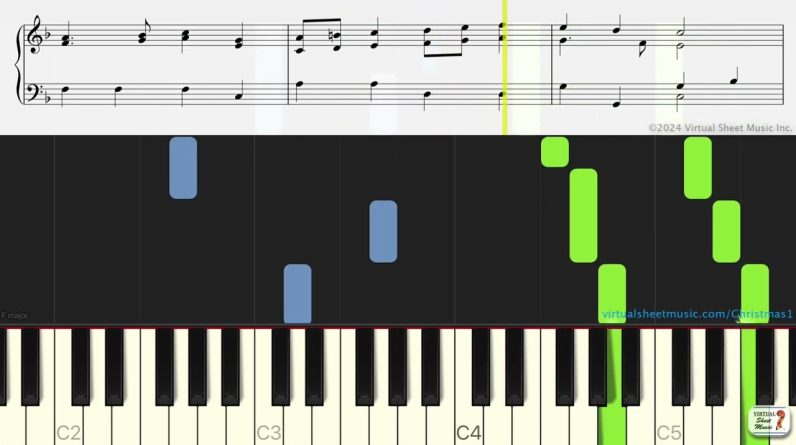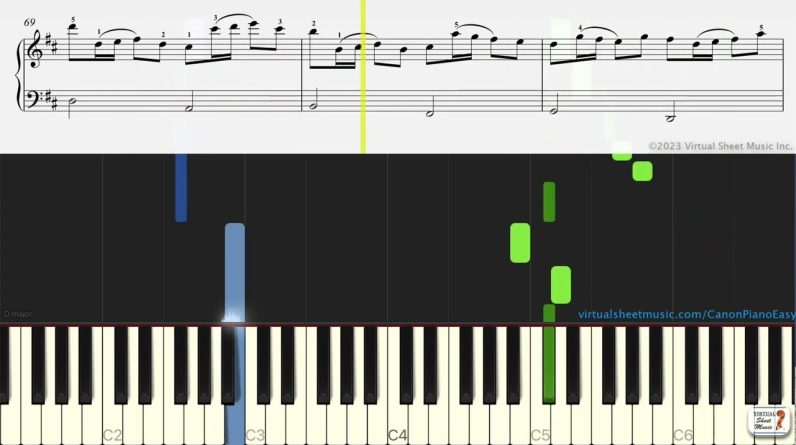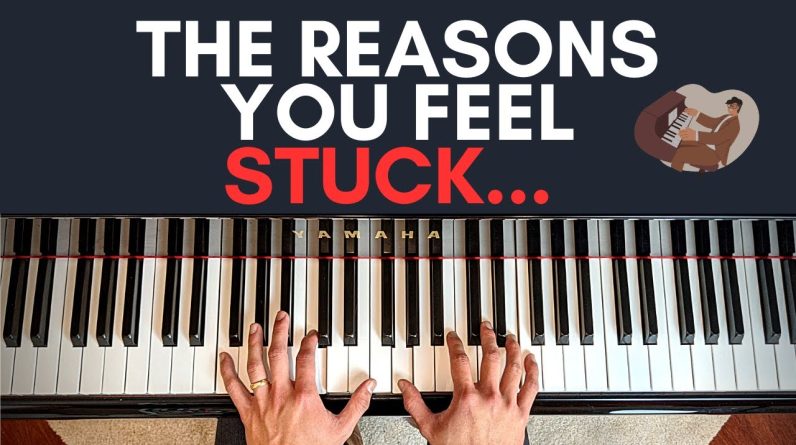Learn how to improvise a Blues solo on Piano with important scale theory concepts and lyrical phrasing
This is Part C of Jason Zac’s 3-part series on Blues Piano
Part A: 12 Bar Blues Piano for Beginners
Understanding the 12 bar blues chord progression and song form (phrase structure) with singing and piano accompaniment. We break down the chords, their shapes and develop a simple but effective rhythm pattern to accompany our vocals with a Blues classic, “I’m Tore Down”
Part B: The Best Blues Piano Patterns for Both Hands
Develop a solid Blues foundation by learning a Left hand and Right-hand chord pattern used in almost every single Blues Rock hit. Also, understand swing and develop a solid method to counting blues rhythms
Part C: How to Create a Blues Solo on Piano
Learn how to form the Blues scales from their respective pentatonic scales (Major & Minor) and then learn how to create a melodic and lyrical Piano solo over the 12 bar blues form.
00:00 – Blues Performance
00:11- Topics covered in Part C (Soloing over the Blues)
00:54 – Building the Blues scales from the Pentatonic Scales
03:19 – Ascending & Descending Improv
04:44 – Developing a “Lyrical” Motif
06:16 – Bringing out the 2 and 4 as accents
07:44 – “Subset” Motifs
09:02 – Revision
► Listen to Jason’s riffs: https://bit.ly/2D6diVV
► More Piano & Theory lessons: https://bit.ly/2P6SGBL
► Visit our website: http://nathanielschool.com
► Subscribe to our channel: https://www.youtube.com/nathanielschool?sub_confirmation=1
► Jason’s PDF for the entire BLUES PIANO series: https://www.patreon.com/jasonzac
#bluespiano #12barprogression #chordprogression #pianochords #pianolesson #bluesscale #pianotutorial #musiclessons #jasonzac
[Music] Hi everyone welcome to part three Which is the soloing part so you’re Going to learn two Iconic blue scales the major blues and The minor blues we’ll first figure out How to form the notes And then what to do with those notes now That you already have a foundation of What the left hand will do Also the blues chord progression i think We can do a lot of work Now in the right hand assuming of course That all the foundations are Sorted out so if you haven’t already do Head over and watch part one Where we look at the chord progression How to form everything The foundational stuff and then go over To part two where i build Important left-hand rhythms which make It bluesy and A right-hand rhythm which makes it even More bluesy Okay to make the blues solo what you Need to learn is The blues scale and there are two blue Scales we have in music We have the major blues and the minor Blues let’s first learn how we can form Them The major blues scale is derived from The major pentatonic scale Or at least you could derive it from the
Major peritonic scale Penta is the word suggests in latin Means five Five not so if you take the major Pentatonic it will be One two three skip the four Play the 5 6 skip the 7 And you have your octave C major pentatonic So to make the major pentatonic into the Major blues What do we do You add the minor third which is e Flat or the note in between the second And the third which is still e flat so You go That’s the major blues major pentatonic Five notes major blues So this is the blue note for major blues That’s what creates that vibe Okay so let’s now look at the minor Pentatonic scale which will in turn help Us form the minor blues scale So the minor pentatonic is one Root c minor third which is e flat Perfect fourth which is f perfect Fifth which is g minor seventh which is B Flat and then the octave Very popular for rock music So to make that a bit more bluesy what We then do We add the tritone There we go what’s the tritone the note
Between The four and the five that’s f sharp or G Flat So that’s your c Minor blues as we call it so you could Just use those Notes actually and just go up and down And if you can manage it with your Left hand rhythm which we learned Earlier Okay major blues up Little slower Play around with that Works for the entire blues progression Yeah so that’s your major blues minor Blues also works just as well Feel free to also cross the octave you Know Just enjoy the scale you know And then follow the blue squads there Right another nice way to get cracking With a solo Now that you know these two scales is to Just develop a very very small Hook or a motif as we call it and then Play the motif over the entire 12 hour Cycle or entire 12 hour progression so let’s just try And come up with a motif a short phrase Right now Something like Papa something like that or maybe Let’s try and figure that out on the
Piano now the motif you make Could be either on the major blues or The minor blues what i’ve sung now Appears to be like a combination Of both let’s just see so i’m doing That’s g f sharp f E flat c b flat c E flat c so i’ll play it once I’m doing a nice glide there you can do That if you want [Music] If you don’t like this b flat you can Even play a that’ll create a Another sound [Music] Variety right I like that don’t overdo it but Do it it’s fun [Music] Okay And another thing with your melodic or Solo playing you need to enunciate The twos and the foes and even though I’m snapping it you need to bring it out There as well so play the two and the Four Rather louder and that again brings out The blues flavor in your playing so There we go [Music] There we go You can play this with the entire 12 bar Form Anything on that blue scale it’s a magic
Scale guys it’s a absolutely magic scale It can work on anything And work on major chords minor claudes And both the blue scales the major blues As well as the minor blues so [Music] Works If you’ve created a phrase a few tips Could be make the phrase very lyrical In other words just make it something a Singer could sing you should also try Singing it [Music] Yeah i can sing it i quite it’s easy to Sing so if it’s easy to sing it’s going To sound Great on the piano everyone’s also going To enjoy it a lot more so i have my Phrase again Or and the other tip when it comes to Creating a moti for a phrase or a lick Like this Is to extract small bits and pieces out Of it you don’t have to play the whole Thing You can just create a few subsets of it For example [Music] You can just keep there [Music] And then later somewhere So now you have two sub phrases even Though you made one You can milk it over two phrases so
[Music] Have a gap there [Music] Or have something else then And this makes your line interesting so Let’s do that in a variety of ways with The same 12 bar i’m going to try to keep The same melody running Shorter phrase [Music] Long Second second half And the whole thing So those are the melodic ideas for the Blues which will help you build a melody As a songwriter or even build a piano Solo which you can play with your band At a concert so how did we do it two Scales Major blues or minor blues how do we Form it using the pentatonic scale and Then adding what we call as the blue Note Okay and when you improvise first try Patterns going Up and down get your fingers going and Then build these Sort of short motifs of phrases which Can be very catchy very lyrical Singable and then extract even more Juice out of it by Creating sub phrases out of the motif Right so that was how we can look at Soloing on the piano over the 12 bar
Blues form Right guys thanks a ton for watching our Blues piano lesson series And if you haven’t already don’t forget To like share Comment subscribe turn on that bell for Notifications and also let us know if You’d like to learn something else I hope this entire series was useful and I will catch you in the next video Cheers
- Deck the Halls for Piano Solo – Christmas Sheet Music – Practice Video - November 20, 2025
- Canon in D by Pachelbel | Simplified for Piano Solo | Practice Video - June 22, 2025
- Pianoforall Free Sample Lesson - March 23, 2025








